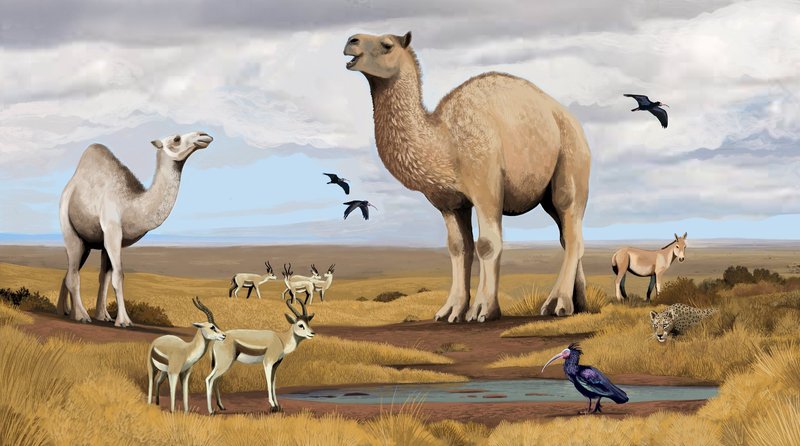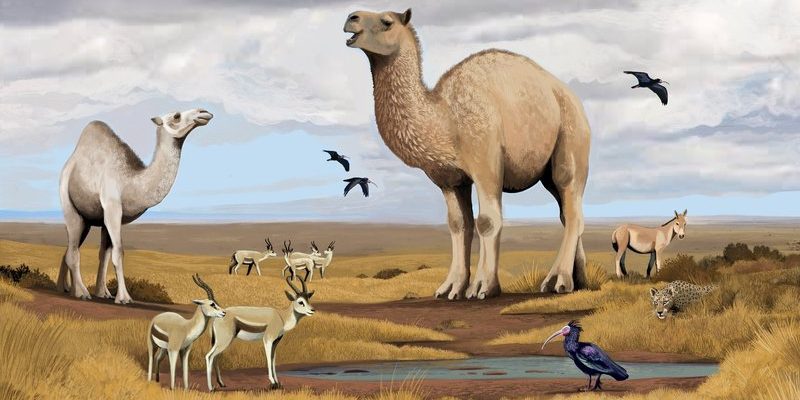
Now, let’s dive into how this wonderful creature came to be. You might be wondering, what led to the dromedary developing its unique characteristics? Well, it all starts millions of years ago when their ancestors roamed the Earth. The evolutionary journey of the dromedary is like a long, winding road—filled with intriguing twists and turns. In this article, we’ll explore how these remarkable animals evolved, what traits helped them survive, and why they continue to play an essential role in various cultures today.
Origins of Camels: A Long Journey Begins
The story of the dromedary camel begins around 45 million years ago. Its ancestors were not the camels we know today but rather small, deer-like animals living in forests and swamps. They belonged to a group called “artiodactyls,” which includes all even-toed ungulates like pigs and hippos. Over time, some of these ancestors made their way to drier landscapes, adapting to a new way of life.
As these early camels moved into arid environments, they gradually developed characteristics suited for survival. For instance, their limbs grew longer, and their bodies became adaptable to storing fat in humps rather than spreading it out, helping them withstand long periods without food. Imagine packing just the essentials in a backpack for a long trek; that’s kind of what the dromedary does with its humps!
The Rise of the Dromedary Camel
Fast forward to about 3 million years ago, and we see the emergence of the dromedary as a distinct species, *Camelus dromedarius*. They became well-known for their ability to handle extreme temperatures and lack of water. In fact, a dromedary can drink 30 gallons of water in one sitting and can survive days without drinking at all. This unique ability is like having a personal water reservoir, making them ideal for desert life.
These camels also have a thick coat that insulates them from the scorching sun during the day and the chilly desert nights. Here’s the thing: their fur reflects sunlight, keeping them cooler in extreme heat. Plus, when it’s cold, their fur keeps them warm. It’s a perfect example of nature’s incredible design!
Why Dromedaries Matter To Humans
Dromedaries have been domesticated for thousands of years, serving as invaluable partners to many cultures. They provide not just transportation but also milk, meat, and even leather. In some regions, they are the backbone of nomadic lifestyles. Imagine relying on a creature that can carry heavy loads across tough terrain for days—that’s what dromedaries do for people.
Their milk is highly nutritious, and surprisingly, it tastes slightly salty and sweet. It’s rich in vitamins and is an essential food source for many communities. Interestingly, dromedaries have also been used in races and festivals, showcasing their strength and speed. They’re like the superstars of the desert, capturing the hearts of many and enhancing local economies.
Adapting to Climate Change
With the ongoing challenges of climate change, dromedaries continue to show remarkable resilience. Their physiological adaptations allow them to survive in extreme heat, but they also face declining habitats due to changing weather patterns. Increased temperatures and desertification affect their living conditions, making it crucial to study their evolution to understand how they might cope in the future.
Researchers are keenly observing these animals to learn how they manage their body temperatures and water retention. This knowledge could be vital for other species facing similar challenges. Just think about it—what we learn from dromedaries could help us better address climate issues for various animals and even ourselves.
The Genetic Makeup of Dromedaries
Let’s take a moment to geek out over genetics. The dromedary’s DNA reveals fascinating insights into its evolution. Recent studies have shown that they share 96% of their genetic material with the Bactrian camel. However, despite this close link, dromedaries have developed unique traits over time, allowing them to adapt better to their specific environments.
The process of domestication has also left its mark on their genetics. For instance, dromedaries have certain genes that help them tolerate high sugar levels in their blood, a quality that’s particularly useful in desert conditions where food supply can be scarce. This genetic adaptability showcases not only their historical resilience but also their potential for future survival in changing climates.
The dromedary camel is a true testament to the power of evolution and adaptation. From their early forest-dwelling ancestors to their status as essential partners for many communities today, they have traveled an impressive path. As we face new challenges in a rapidly changing world, understanding the evolutionary history of the dromedary can teach us valuable lessons about resilience and survival.
In the grand scheme of things, the dromedary is more than just an animal; it’s a symbol of endurance and adaptability. Their continued existence depends on our ability to appreciate and protect their habitats. So, whether you encounter them in a desert market or a wildlife documentary, remember: these remarkable creatures are living reminders of nature’s ingenuity and the enduring bond between humans and animals.

